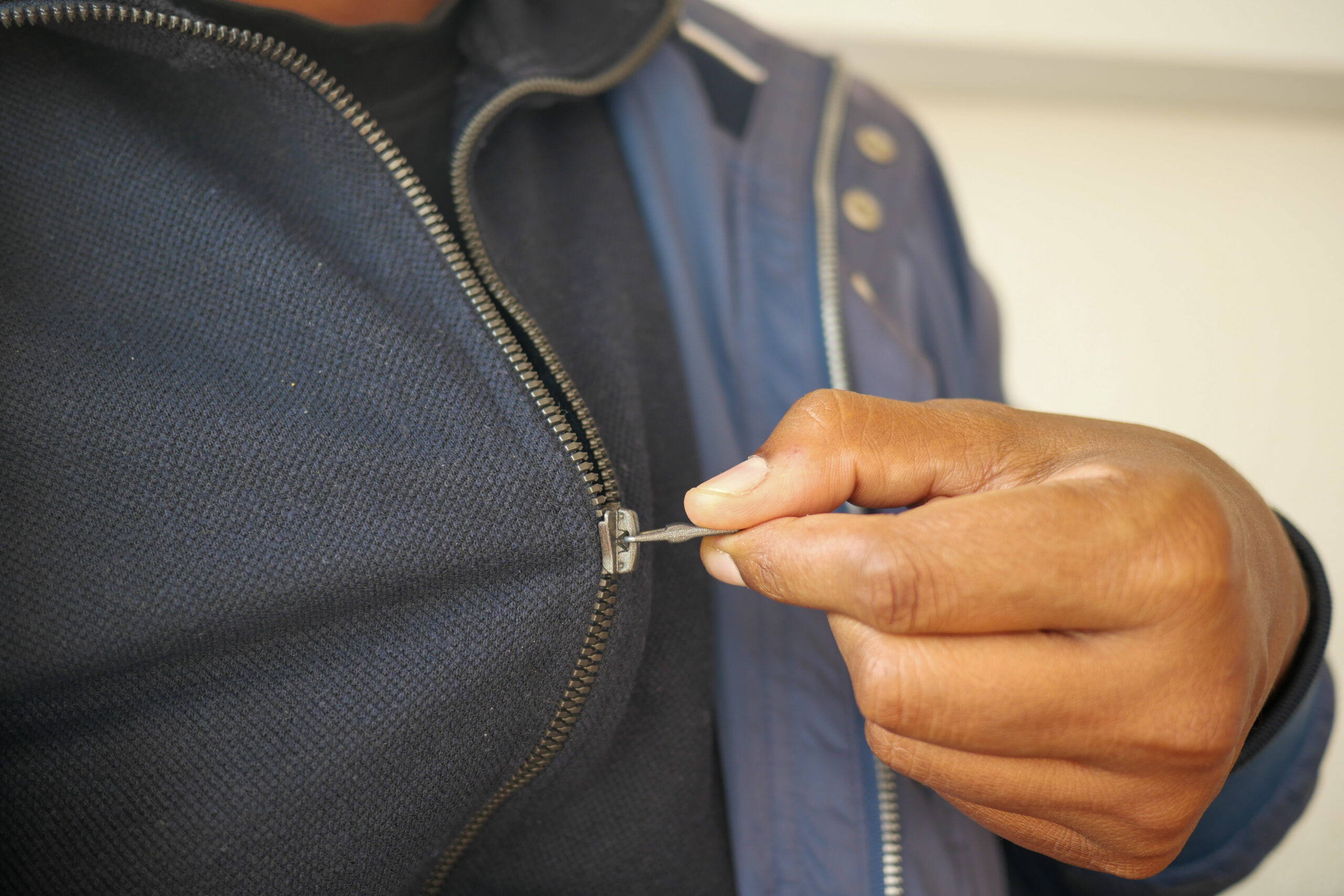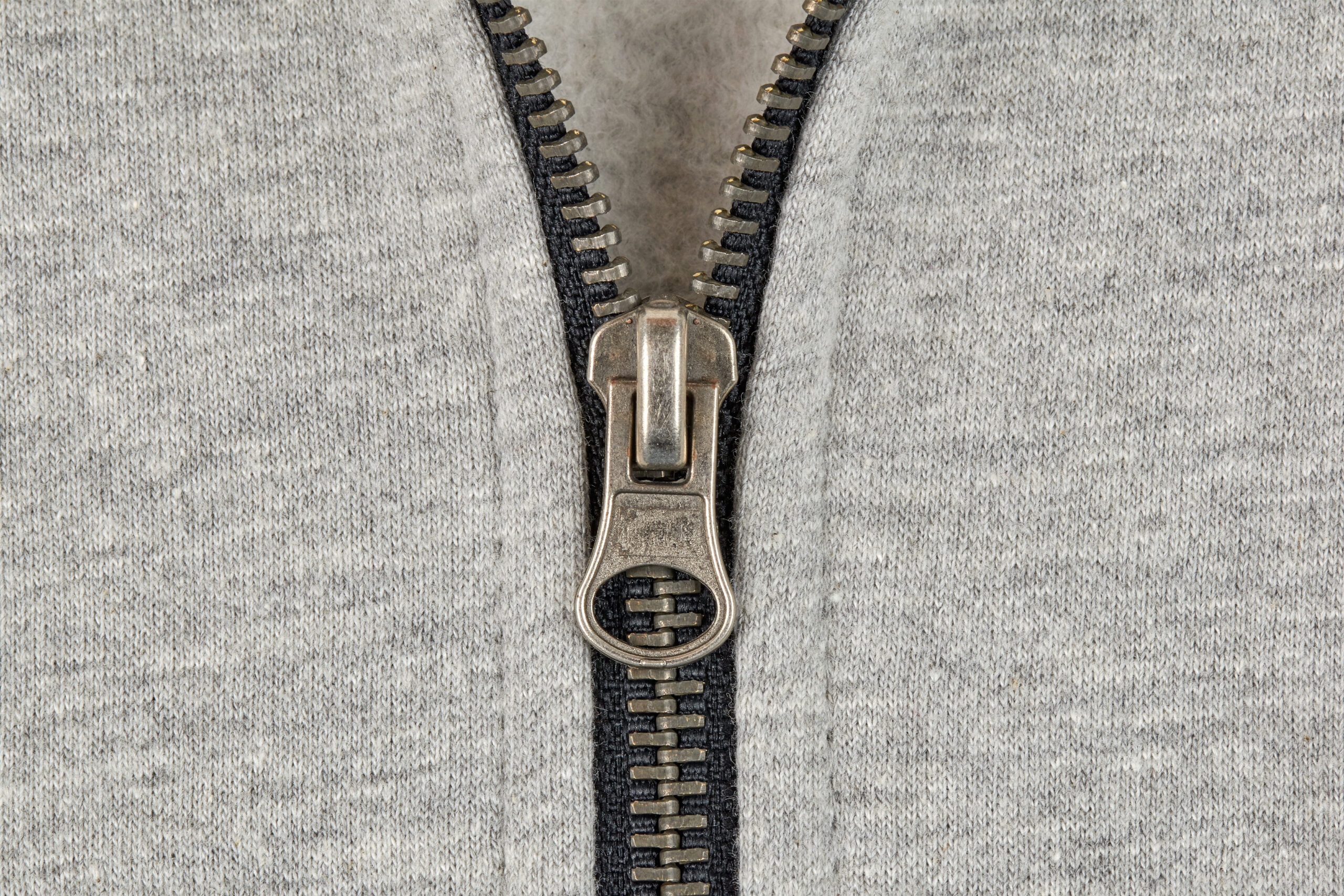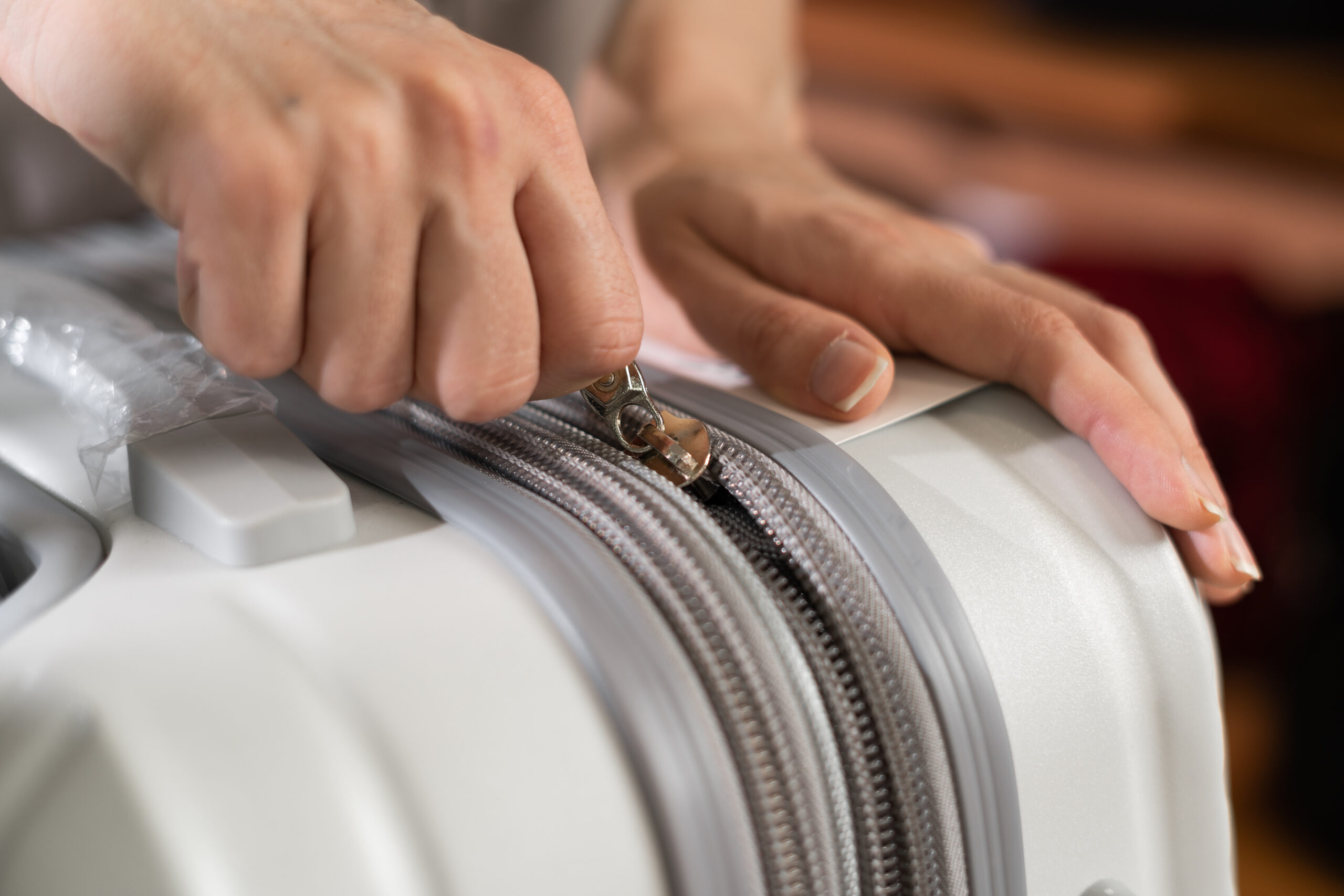Zipper tape rarely takes center stage in design reviews, yet it determines whether a closure glides smoothly for years or fails under its first stressful season. Beneath every boat enclosure, industrial tarp, tent wall, backpack panel, or performance jacket, the weave density of the tape—the tiny count and pattern of yarns in warp and weft—quietly governs how loads transfer, how seams behave, and how long the system resists fatigue. If you’ve ever wondered why two seemingly similar zippers perform differently in the field, a significant part of the answer lives in the tape’s textile architecture.
At LenZip, zipper tape isn’t an afterthought; it’s engineered as the structural foundation of the closure. The tape links teeth or coil to the garment or assembly, interfaces continuously with sliders and stops, and absorbs the push-pull of repeated opening cycles and environmental stress. When designers or OEMs specify a zipper, they are, in effect, specifying a woven composite system—chain, slider, stops, and tape—where weave density dictates both strength and flexibility. Ignoring that parameter can cause distortion, edge fray, delamination with coatings, or outright seam failure. By contrast, tuning it correctly yields stable, smooth-running closures that protect products and reputations.
Across apparel, marine fabrication, modular structures, and specialty gear, tape density determines whether a zipper maintains alignment and integrity over time. Too tight a weave, and you lose bend radius and comfort; too loose, and load paths migrate into seam threads and fabric, inviting creep, warping, or split seams. For startups and established OEMs alike, understanding weave density is fundamental to selecting or specifying zippers that meet real-world requirements—especially when products must conform to ASTM/MIL-SPEC testing from the first prototype to scaled production.

What Is Zipper Tape and Why It Matters
Zipper tape is the woven textile base that anchors a chain—interlocking teeth or coil—onto a sewn product. It engages with sliders and stops, transitions forces into seams, and ensures the chain presents consistently so elements mesh correctly. The tape’s structure governs tensile strength, dimensional stability, and sewability—how predictably the assembly sits and feeds under presser feet and guides. When the weave density is inappropriate for a product’s geometry or load case, you see predictable symptoms: the tape can ripple, “smile,” or pull away from seam allowances; edges may fuzz and fray; chain pitch may micro-misalign, creating rough slider travel or premature tooth/coil wear.
The right tape is not a generic commodity. Engineers at LenZip match fiber, density, and weave pattern to end use. Nylon, polyester, and polypropylene each bring distinct mechanical and environmental traits. Designers can scan the materials landscape in Zipper Materials & Finishes, see how chains integrate with tapes in Zipper Types Explained, and right-size selections with the Zipper Gauge Chain Size Chart. Those references, combined with early engineering consultation, turn vague fit-and-feel targets into repeatable specifications.
The Science Behind Weave Density
Weave density describes the number of yarns per unit length in the warp (lengthwise) and weft (crosswise) directions. In zipper tape, this count acts like an analog dial for performance. Higher densities distribute loads more evenly, raise breaking strength, and resist dimensional drift under tension. Lower densities increase drape and bend radius, improving comfort on garments or compliance around curved panel paths. Designers often discover that the “perfect” tape is not the densest possible one; it’s the one whose density and yarn system fit the specific geometry, movement patterns, and environmental exposures of the product.
Microstructure matters. Yarn denier—the linear mass of the filaments—shapes abrasion resistance and stiffness, while the weave pattern controls how yarns interlock. A plain weave yields a gridlike stability that’s easy to sew and finish. Twill shifts interlacing points diagonally, improving flexibility and surface smoothness. Satin spreads interlacing farther apart, increasing drape and reducing friction. The interplay of density, denier, and pattern determines how a tape bends, how it wears under slider contact, and how it behaves in the seam when the product flexes.
Material science completes the picture. For quick orientation: nylon offers elasticity and fatigue endurance; polyester offers UV stability and dimensional control; polypropylene offers chemical resistance and low water uptake. For a deeper dive into fiber behavior in performance contexts, see Unraveling the Differences: Nylon and Polyester Explained, Polypropylene vs Polyester, and Nylon vs Polypropylene.
How Tape Construction Influences Strength
Think of zipper tape as a tiny woven beam. Loads enter through the chain and slider, move into the tape, and continue into the sewn product. Engineers tune warp-to-weft ratios to balance longitudinal strength and lateral stability. More warp yarns help the tape resist elongation along the zipper’s length; more weft yarns stabilize width so edge fray and seam creep don’t accumulate over cycles. When yarn counts are balanced for use case, the chain stays presented, the slider engages predictably, and the seam behaves like a structural member rather than a hinge.
Finishing processes refine performance further. Heat setting locks in geometry for polyester tapes; calendaring smooths tape surfaces for consistent feed and uniform lamination; hydrophobic or anti-wick finishes help control moisture migration; resin finishes modulate friction so sliders travel smoothly without picking up lint or aggressively polishing the tape face. Because LenZip manufactures domestically, finishes are applied under controlled conditions with lot-level traceability. That matters when you need the first and ten-thousandth zipper to behave identically on the factory floor and in the field.
Material Comparisons — Nylon vs. Polyester vs. Polypropylene
Fiber choice and density interact. The same density can yield different outcomes depending on the polymer and filament architecture.
Nylon tapes, at moderate densities, excel in products that flex frequently: technical apparel, backpacks, soft luggage, and gear that must curve around human motion or pack contours. Nylon’s elasticity and fatigue resistance mean fewer crinkles, fewer hard corners, and smoother slider travel over time. Designers exploring the tradeoffs with other fibers can consult Nylon vs. Polyester vs. Polypropylene — The Ultimate Webbing Showdown and Nylon vs. Polypropylene for Marine and More to align tape choices with product goals.
Polyester tapes, especially at higher densities, deliver the dimensional stability and UV durability required for outdoor and marine environments. Polyester’s low creep keeps chain pitch aligned under thermal cycles, while its abrasion resistance extends life across many opening cycles. When customers store enclosures in sun and salt air, polyester often outlasts alternatives, holding gauge and seam shape longer.
Polypropylene shines where chemical resistance, low density, and cost efficiency matter. At higher densities, PP tapes offer strong seam support with minimal water uptake and good inertness in certain industrial settings. Its recyclability and inert behavior also support sustainability narratives—useful when product lines target low-impact, long-life components.
LenZip pairs fiber, density, and weave pattern specifically to end-use constraints. That matching is the difference between a closure that meets a test once and a closure that meets its performance envelope daily in unpredictable conditions.

Testing and Performance Standards
Specifying zipper tape means proving it. In the lab, ASTM D6775 remains a core reference for breaking strength and elongation of woven tapes and webbing under controlled conditions. But because a zipper is a system, LenZip validates tape and chain together as an assembly, subjecting samples to joint tensile tests where the failure mode and energy absorption profile matter as much as the raw break number. Consistent with LenZip Zipper Testing Standards, engineers cycle zippers under tension, then analyze slider track smoothness, pitch retention, and edge integrity. Environmental chambers expose assemblies to humidity, heat, UV, and salt fog to simulate years of outdoor use.
What separates routine testing from engineering validation is feedback. LenZip uses microscopy to study yarn migration and deformation after fatigue, correlating the observations to warp/weft ratios and finish recipes. That feedback loops directly into production parameters—yarn tensions, loom settings, heat-set profiles—so the spec you approved in sampling is the spec you receive in production. When projects require it, the company aligns with MIL-SPEC procurement standards and internal benchmarks adapted for defense and industrial contexts to assure interchangeability and repeatability.
For reference on the webbing method, see ASTM D6775; for zipper-system perspectives, designers often start with the in-house overview at Zipper Testing Standards and then define custom acceptance criteria based on field risk.
Real-World Applications
No single density or fiber is “best.” What’s best is what matches your geometry, loads, and environment.
In marine fabrication, UV, salt, and repeated flex cycles punish closures. Dense polyester tapes offer UV resistance and dimensional stability, keeping panel lines true and resisting creep across thousands of operations. Boat enclosures and cushions benefit when the tape resists wicking and when finishes don’t chalk or flake under sun exposure. Marine specialists can survey solutions at LenZip Marine Fabricators and compare materials at Polypropylene vs Polyester when projects demand high sun and salt tolerance.
In industrial structures and modular shelters, large panels generate high seam loads and wind-borne shock. Heavy-gauge chains require tapes that hold alignment under dynamic, multidirectional stress. Denser weaves carry that load without ballooning seam allowances or telegraphing distortion into membranes. Planners working on event enclosures or field-deployable kits can review zipper roles in structures via LenZip’s tent industry solutions and ground themselves in chain sizing with the Zipper Gauge Chain Size Chart before locking specs.
In technical apparel and soft goods, comfort and mobility compete with durability. Medium-density nylon or polyester tapes balance bend radius and life cycle, keeping garments supple at elbows, hems, and plackets. When a jacket’s opening arcs across curved pattern pieces, the tape must flex without introducing waves that snag sliders. Designers who are clarifying fiber-performance questions can lean on Unraveling the Differences: Nylon and Polyester Explained to ensure the tape fiber supports the garment’s motion profile.
In medical, cleanroom, and defense contexts, sterilization cycles, temperature spikes, and contamination controls introduce edge cases for tape finishes. Here, density intersects with finish chemistry and coating compatibility; the goal is a tape that maintains geometry and surface characteristics after repeated processing. While requirements vary, the principle remains constant: engineer density to the environment, validate under representative stresses, and maintain lot-to-lot consistency.
Engineering and Manufacturing at LenZip
From first sample to long-run production, LenZip treats zipper tape as a critical control point. Each design passes through a repeatable path: define loads and geometry, choose fiber and weave pattern, set target density and finish, sample and test, then lock parameters for scale. Engineers evaluate yarn denier, filament distribution, and finish uptake to ensure tapes bond correctly with coatings and accept the chain without bias or skew. Measurements like bending modulus help verify that tape stiffness aligns with the garment’s or panel’s curvature so the zipper neither kinks nor “bridges” across stress points.
Domestic manufacturing is a functional advantage. Because LenZip runs engineering and production in the U.S., process tweaks happen fast: a loom setting adjustment or a heat-set change can be qualified and implemented without multi-month freight and communication cycles. That agility shows up in tighter tolerances, fewer surprises, and alignment between engineering intent and delivered parts. Learn why teams choose a domestic partner at Why Choose LenZip and, if you’re mapping the competitive landscape, compare philosophies in LenZip vs YKK.
Design Integration and Prototyping
The best place to solve tape problems is before they exist—during prototyping. When designers lock density and fiber during sample development, they can test seam allowances, stitch types, and chain engagement as a system. LenZip supports this with cut-to-length prototyping and small pilot runs so teams can A/B test densities and finishes beneath identical sewing conditions. The result is evidence you can feel: how the slider pulls through a curve, how the tape resists twist at the top stop, how the seam holds shape after flex cycles.
That same prototyping discipline supports sustainability goals. Getting the density right early reduces rework, scrap, and dead inventory. For lines that aim to use recycled or lower-impact polymers, designers can use Zipper Materials & Finishes and Unraveling the Differences: Nylon and Polyester to align material narratives with mechanical reality, then validate with testing that confirms the greener choice meets the duty cycle.
Quality, Documentation, and Traceability
Performance is half execution and half documentation. With domestic production, LenZip maintains lot-level traceability for yarn inputs, finish batches, and loom settings. Certificates tie delivered parts to validated runs, and when programs require it, acceptance criteria can include microscopy photos of tape edges after fatigue or measured changes in thickness after heat cycles. That data matters in regulated or safety-adjacent categories and provides confidence to retailers who need durable goods claims backed by process control rather than marketing copy.
Inventory Planning and Lead-Time Control
Even the right density is a liability if you can’t get it when you need it. Because LenZip builds in the U.S., planners can create reorder strategies with lower safety stock and faster replenishment. If demand shifts or a hero product outperforms forecasts, tape density and finish remain stable across replenishment lots. For multi-SKU lines sharing chain gauges, this consistency simplifies buying and reduces mismatches when production pulls from mixed inventory.

Ecommerce, Merchandising, and Customer Experience
Your customers notice components most when they fail. Give them fewer reasons to notice by explaining the quality decision up front. Product pages can call out that the zipper uses a U.S.-engineered tape from LenZip, sized per the Zipper Gauge Chain Size Chart and validated under ASTM/MIL-SPEC methods. Post-purchase care content drawn from Zipper Materials & Finishes helps customers keep closures clean and operating smoothly, reducing service tickets and returns. Educated customers are more forgiving when products face extremes, and they become advocates when components exceed expectations.
Common Design Mistakes
- Selecting tape weave purely for cost rather than tensile and environmental requirements
- Ignoring warp/weft load direction and seam geometry during pattern design
- Pairing incompatible tape and chain materials, such as nylon coil with polypropylene tape without verifying adhesion and seam behavior
- Overlooking environmental factors like UV, humidity, detergents, and salt exposure across the product’s duty cycle
- Skipping ASTM D6775 joint verification and fatigue cycling before committing to production
Each misstep introduces risk. Early collaboration with LenZip engineers mitigates those risks by aligning density, fiber, and finish to real use cases instead of theoretical averages.
Best Practices for Zipper Tape Design
- Match tape fiber to end use: nylon for flexibility and cyclic bending, polyester for dimensional stability and UV resistance
- Validate seam strength and pitch retention under expected load and temperature ranges
- Balance weave density with bend radius so tape follows curves without kinking or “bridging”
- Use finishes that align with exposure: UV protection for sun, hydrophobic and anti-wick treatments for moisture, and abrasion-tuned resins for frequent slider cycles
- Partner early with a domestic supplier for prototyping, rapid A/B density trials, and documented QA that scales to production
Applying these principles produces closures that feel right, last longer, and protect brand equity.
Conclusion
Weave density is invisible to end users, but it’s decisive for engineers and designers. From seam integrity and slider smoothness to UV stability and fatigue life, the count and configuration of yarns in zipper tape determine whether products meet their promises. When density and fiber are matched to the job—and validated under relevant tests—the closure disappears into the experience. When they’re wrong, the zipper becomes a daily reminder of compromise.
LenZip builds against that compromise. With U.S.-made tapes and chains engineered as systems, validated under ASTM/MIL-SPEC protocols, and produced with domestic process control, the company delivers repeatable performance from prototype to scale. Whether you need bend-friendly tapes for garments, high-density polyester for marine enclosures, or robust supports for modular structures, LenZip can tailor weave density, fiber, and finish to the real conditions your product will face.
If you’re refining specs now, align your sampling calendar with density trials and lab validation. If you’re auditing quality issues in the field, start at the tape edge and work inward: look for yarn migration, seam bite, and chain presentation under load. In either case, a conversation with LenZip’s engineering team will shorten the path to a stable spec.
Request a Quote to prototype with cut-to-length samples, dial in density and finish, and lock the parameters that will carry your products through their full life cycle.
Learn more about zipper testing, materials, and performance standards in the LenZip Resource Center.
FAQ – Zipper Tape Weave Density
What is zipper tape weave density?
It’s the count of warp and weft yarns per unit length in the tape that anchors a zipper’s chain to the product. Higher density generally increases strength and dimensional stability; lower density improves drape and bend radius. For material and finish context, see Zipper Materials & Finishes.
How does weave density influence strength and flexibility in practice?
Dense tapes support higher joint loads and resist creep, making them ideal for marine enclosures and industrial panels. Looser weaves follow curves and human motion better in apparel. If you’re right-sizing density to chain gauge, the Zipper Gauge Chain Size Chart is a practical reference.
Which materials pair best with higher densities?
Polyester’s dimensional stability and UV resistance suit high-density tapes in outdoor and marine products. Nylon, at moderate density, excels in applications with frequent bending. Compare behaviors in Nylon vs. Polyester vs. Polypropylene — The Ultimate Webbing Showdown.
How does LenZip verify tape performance?
By testing tape and chain as a system under ASTM D6775 and MIL-SPEC protocols, plus fatigue cycling and environmental exposure (UV, humidity, salt fog). Microscopy and statistical controls ensure lot-to-lot consistency.
When should designers lock weave density during development?
Lock it during prototyping. Use cut-to-length samples to A/B test densities, then validate with seam pull and fatigue tests before committing to production. Early alignment prevents costly rework and protects schedules.
Can LenZip tailor density, finish, and fiber to specific industries?
Yes. From marine fabricators to tents and modular structures to technical apparel, LenZip engineers density, fiber, and coating systems to match load cases, geometries, and environmental exposures—delivering U.S.-made consistency at scale.
